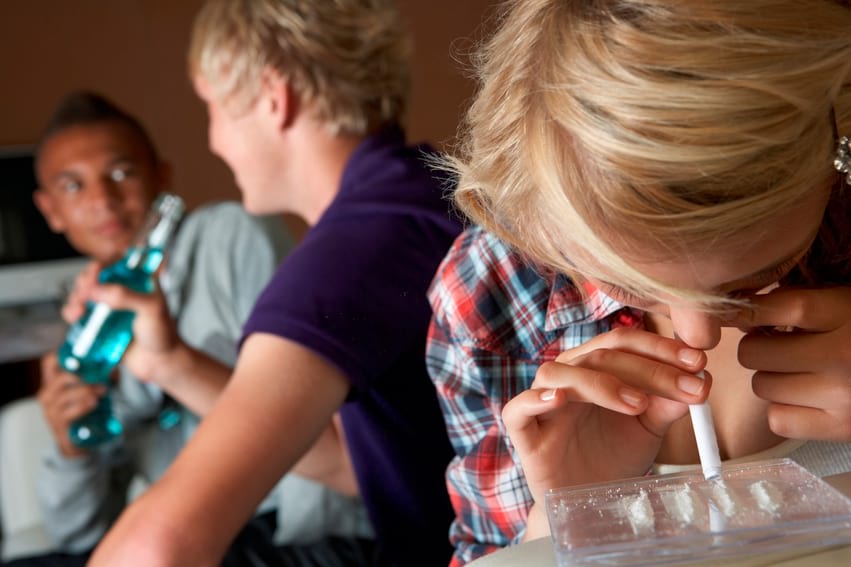The Office for National Statistics has just (28 November 2019) published its annual report on young people (aged under 18 years) in drug and alcohol treatment. The statistics cover the 2018/9 financial year and give some cause for concern.
Less young people accessing treatment
There were 14,485 young people in contact with alcohol and drug services between April 2018 and March 2019. This is a 7% reduction on the number the previous year (15,583) and a 40% reduction on the number in treatment in the year 2008 to 2009 (24,053).
There are several factors which may have influenced this downward trend including the possibility that it reflected historic declining prevalence. However, there is recent evidence that the number of young people using drugs has started to increase, so the more recent decreases in young people accessing treatment services may not reflect the actual need.
The latest NHS Digital survey of school age children conducted in 2016 showed nearly a fifth (18%) of pupils said that they had taken drugs in the last year. Excluding new psychoactive substances and nitrous oxide (newly added to the drug prevalence measure in 2016), 15% said they had taken drugs in the last year, up from 10% in 2014.
The Crime Survey for England and Wales 2018-19 also showed an increase in any class A drug use in the last year among 16-24 year olds, going from 8% in 2008-9 to 8.7% in 2018-19.
What substances do young people seek help for?
Cannabis remains the most common substance (88%) that young people come to treatment for, the same proportion as the last 3 years.
Around 4 in 10 young people (44%) said they had problems with alcohol (compared to 46% the previous year), 14% reported ecstasy and 10% reported powder cocaine problems.
There was a slight increase in the number of young people seeking help for opiates such as heroin (216 young people compared to 187 last year), which is less than 1% of those in treatment.
There was a 35% increase in young people reporting a problem with benzodiazepines from the previous year, and 3 times the number in 2016 to 2017.
Which young people seek help?
There were 14,485 young people in contact with drug and alcohol services in 2018 to 2019. Two-thirds were male (66%), which was the same proportion as the last 2 years. The median age for both male and female was 15 years old. The number of younger children (under 14) in treatment remained relatively low (9%).
The most common route for young people to get into specialist treatment services was a referral from education services (such as mainstream education or alternative education). There were 4,940 (32%) young people who entered treatment this way.
Referrals from the youth justice system were the second largest source of referral (20%). Social care services accounted for 17% of referrals and health services referrals for 10%.
Vulnerabilities
Young people often enter specialist substance misuse services with a range of problems or ‘vulnerabilities’ which are related to, or in addition to, their substance use. These include using multiple substances, having a mental health treatment need, being a looked after child or being not in education, employment or training (NEET). Other risk factors can affect their substance use, such as self-harming behaviour, sexual exploitation, offending or domestic abuse.
Vulnerabilities are reported here only for young people who entered alcohol and drug treatment services during 2018 to 2019.
The most common vulnerability was early onset of substance use (77%), which means the young person started misusing substances before the age of 15. This was followed by young people reporting poly-drug use (56%) and almost a third (32%) who had a mental health treatment need.
Proportionally, girls tended to report more vulnerabilities than boys, including self-harming behaviour (29% compared with 10%) and sexual exploitation (11% compared with 1%).
More than a third (37%) of young people report 4 or more vulnerabilities.
Treatment exits
Two-thirds (67%) of young people in treatment exited the treatment system. Of those who left, 80% successfully completed their treatment and 13% dropped out. A further 5% were referred to another provider for treatment and 2% declined the treatment offered.
Conclusion
It is dispiriting to cover yet another report in the social care sphere where the most obvious conclusion is that the public spending cuts associated with austerity have resulted in vulnerable people no longer able to access the services they need. How else can we explain an increase in the number of young people using drugs alongside a decrease in the number seeking help?
There is a double danger here in that with young people unable to receive prompt help for their drug and alcohol problems, the extent of need is under-estimated, potentially making further cuts and reductions in treatment capacity possible in future years.









